15 Uses of Gold
02/02/2024Daniel Fisher
Free & fully insured UK Delivery. Learn more
Secure & flexible payments. Learn more

Buyback Guarantee Learn more
Gold is one of the most sought-after and widely used commodities on the planet. It’s not just gold’s rarity that makes it appealing. Gold’s unique properties also make it ideal for a number of specific uses .
The fact that it does not tarnish and is so easily shaped makes it perfect for use in all kinds of applications. It also has many other beneficial properties such as its attractive natural sparkle, and the fact that it’s a great natural conductor of electricity, highlighting the importance of gold across a range of aspects. Here are 15 different uses for gold in the modern world.
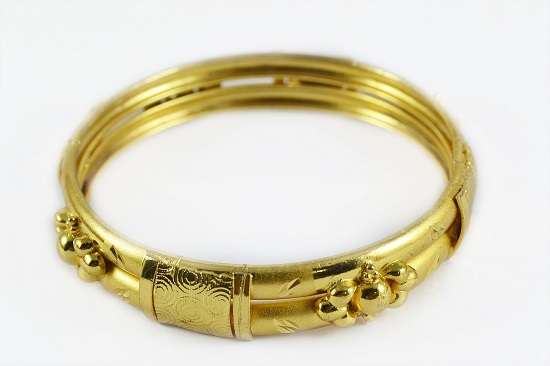
When most people picture gold, they envision a sparkling necklace or diamond embedded engagement ring. In fact, most of the world’s gold consumption is used in the production of jewellery.
Figures estimate that around 52% of the world’s total production of gold is used exclusively by the jewellery industry with countries such as India and China continuing to fuel this massive demand.
Gold has been used to create jewellery for thousands of years. You could argue that gold is the perfect metal for jewellery for a number of reasons. One of the main reasons for its everlasting popularity is the fact that it does not react with moisture and so, therefore, does not rust and is tarnish resistant. Visually, it has incredible lustre and its yellow colour is appealing for ornamental jewellery. It’s high ability to alloy with other metals opens up huge opportunity to create a vast array of alternative colours to suit jewellery. Colours will vary according to which metals gold is combined with. Silver produces a white gold, while copper creates a reddish tinge.
Gold’s malleability provides the ability to be hammered into very thin sheets, drawn into wires and be melted and cast into ornate shapes, all of which helps creativity in jewellery. As it mixes so well with other metals, the carat (or purity) or the gold is often diluted to decrease this malleability and softness. This suits specialist jewellery production which needs to be strong enough to hold stones. Demand for bespoke jewellery has increased considerably in recent years as more consumers wish to possess individual jewellery items no one else owns. Gold’s various carat mixes make it the most versatile metal to achieve this uniqueness.
Undoubtedly, the long history of gold being highly valued and representing success and power, has contributed to it being the preferred choice for jewellery. Along with tradition, gold’s ubiquity in various religions has led to vast populations expecting important objects and jewellery to be made of gold.

After jewellery, the most common use for gold is in coinage. Due to its rarity gold has long been used as a form of currency and people were using gold coins as far back as 6000 years ago. At one stage many of the world’s currencies were fixed to a gold standard which was set at the price per ounce. Whilst we don’t use gold to make money anymore, it is still used to make bullion coins (e.g. Gold Sovereigns and Gold Britannias), and it is estimated that around 10% of the world’s gold is used in coinage or in financial stores of government.
Gold’s relative scarcity suited the concept of currency ideally, with its rarity and desirability providing a sound basis for value and long term exchange. Originally, gold pieces were used as forms of exchange for goods, but overtime size of these pieces became standardised into coins to enable smoother transactions. Even when the first paper money was introduced, gold was kept as collateral to guarantee its value.
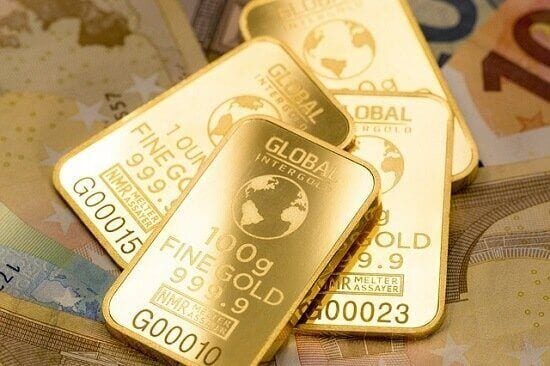
Gold has been a popular commodity for centuries and is viewed by investors as a safe haven and an excellent store of wealth. Due to the fact that it is a tangible commodity with a long history of market performance, gold is often purchased by investors seeking to protect themselves against the risks of inflation and downturns in the economy. The most common form of gold investment is usually gold bullion bars or coins. You can also purchase gold exchange funds on the stock exchange.
Gold has been digitised in various forms to open gold investment to those wishing to actively trade. Whether it takes the form of Exchange Traded Funds (ETFs), spread betting on the gold price or Gold equity funds, the precious metal plays a growing role in investors’ portfolios.
Free ultimate guide for keen precious metals investors
In some countries, like India for example, gold is considered very precious and can be used as collateral against loans. As we move towards a more digitised financial system, tangible assets such as gold or silver are likely to become more important and using gold as collateral could become more commonplace.
Gold has played an important role in the dental industry for nearly 3000 years, and is often used in crowns, fillings and bridgework. Gold is non-toxic and can be placed in contact with the body without causing harm. The fact that it is also such a durable metal and doesn’t corrode in the mouth makes it perfect for use in dental treatment.
The use of gold in dentistry began to decline in the late 1970s due to the rising gold price. Alternatives were developed, but we’ve recently observed a renaissance in gold usage due to worries that lees inert materials may impact long-term health.

The unique properties and uses of gold has meant it’s been used to treat a variety of medical conditions since around 2500 BC. Chinese physicians originally used pure gold to treat conditions such as smallpox and skin ulcers. The ancient Romans also used gold salves to treat a variety of skin problems. Today gold is still used in medicinal treatments, particularly the treatment of inflammatory conditions such as arthritis, where injections of a gold solution are sometimes administered in particularly severe cases. Since gold is very resistant to bacteria and non-toxic, it is also frequently used in bodily implants where there may be a risk of infection, such as inner ear implants.
Colloidal gold nanoparticles are increasingly being used to help the delivery of chemotherapy. Their minute size and non-immunogenicity make their molecules ideal for targeted drug delivery systems. Drug molecules and tumor-specific ligands can be attached to the gold nanoparticles to pursue the tumour without redeploying through the body.

Not many people know this, but gold can be found in the electronics of every single mobile device in the world. Research carried out by the World Gold Council, discovered that a single phone can contain up to 50 milligrams of gold.
This may not seem like a lot but when you consider the number of mobile phone’s there are in the world, it all adds up to a pretty impressive amount of gold.
It’s all to do with the types of electronic devices and gold’s high resistance to rust and corrosion. This is particularly important with solid state electronics which use very low currents and voltage. Examples of these are light-emitting diodes (LED) and liquid crystal displays (LCD) which are based solely on semi-conductors. Obviously, this technology predominates in today’s smartphone screens. With such low voltages, the slightest corrosion at the contact points will disrupt the flow of current, so gold is utilised for its reliability. That’s why gold is a feature of high-end speaker cable connectors.
With gold’s use in every mobile device, the amount of gold in the world is actually shrinking each day! Each contains about 30p of gold, not a lot right? However, with around a billion mobile phones in global circulation and each one with an average of 2 years lifespan, it soon adds up. With very few phones being recycled, this gold is lost forever.
Gold is also frequently used in other electronic devices such as laptops and computers. It is one of the best natural conductors of electricity which is why it is often found in computer chips, allowing your computer to pass on, and receive information more easily.
Whilst not as conductive a metal as silver, gold is more frequently used in electronics due to the fact it doesn’t ever tarnish or rust. With the need for so much data transmitting, the demand for reliability outweighs the high cost of using gold. Generally, gold is utilised to mount processing chips onto motherboards.
Our automated portfolio builder will provide suggestions based on various investments objectives.
Gold plays a key role in protecting astronauts from harmful infrared rays from the sun. The visor on their helmet is coated with a thin layer of gold which acts as a filter. Gold is also used on space vehicles to help reflect infrared radiation and stabilize core temperatures. With such vast sums being invested into space research, reliability is key, so the high cost of gold isn’t a deterrent to its usage.

Some particularly up-market restaurants use gold shavings or gold leaf to decorate their more extravagant dishes. Gold is non-toxic and can be eaten without consequence, however, it can’t be digested and passes straight through the body. Gold also has no taste so the use of gold in food is purely for decorative purposes.
Japanese gold leaf producers Haku Ichi serve ice cream decorated in gold.
Gold is frequently used in manufacturing due to the versatility of its qualities being ideal to resolve a range of production challenges.
Gold, prized for its conductivity, plays a crucial role in managing heat in manufacturing. Whether in electronic components or heat sinks, its ability to efficiently dissipate heat ensures optimal performance and prevents overheating, making it an essential component in diverse manufacturing equipment.
Beyond its aesthetic appeal, gold’s high reflectivity finds practical application in manufacturing optics and coatings. Precision instruments, mirrors, and telescopes benefit from gold’s reflective properties, ensuring clarity and accuracy in intricate manufacturing processes.
Gold’s self-lubricating properties shine in production machinery. Applied as a thin coating on microelectronics and precision components, gold reduces friction, enhancing efficiency, and prolonging the lifespan of vital machinery parts, contributing to the seamless operation of manufacturing processes.

Some particularly grand buildings often feature some form of gold decoration. Gold leaf, in particular, is frequently used to adorn important features on buildings all over the world.
Some of the most famous examples include St. Michael’s Cathedral in Kiev, whose golden domes can be seen from miles around, and the Criterion Restaurant in London with its extravagant gold leaf ceiling.
Apart from gold’s obvious status symbol and incredible aesthetics, its malleability is the key to it adorning so many prestigious buildings. Gold leaf is created when gold sheets are beaten to an incredibly thin 3 millionths of an inch in thickness. This amazing feat means the gold leaf is very versatile to gild and emboss non-uniform surfaces. It also reduces the cost of material dramatically, allowing larger areas to be gilded. The largest cost is, in fact, the skilled labour required to apply the specialist leaf.
Gold’s anti-corrosive and anti-bacterial qualities also make it a popular choice to use on certain internal and external building surfaces which need to be protected. Gold’s easy marriage with other metals creates the opportunity to gild buildings with a wide variety of gold leaf colours and shades. Despite this versatility, the recognisable yellow of high carat gold is usually selected due to its conspicuous nature.
Less obvious is the use of gold in glass production. It is utilised to create a red hue to the glass and is pivotal for climate control in speciality glass. Whether added to the glass compound or coated onto its surface, the addition of gold helps reflect the sun’s glare and heat while also acting as insulation in the winter.
Gold is frequently used in the cosmetics industry and has been hailed as a revolutionary ingredient in everything from topical skincare creams to lip balms and moisturisers. Its many properties are said to help improve skin tone and elasticity as well as providing significant anti-ageing benefits and improving blood circulation. Gold Nano-particles have been used in the products of some pretty influential names in the beauty industry including L’Oréal and Dior.
Gold ink is becoming increasingly popular with printing companies since photos printed in gold can produce high quality and long-lasting images. CD’s and DVD’s that have been coated in printed gold can also resist scratches and last longer.
More recently, there’s a growing trend to use gold in 3D printing. The reduction in the cost of 3D printers and becoming more widespread has led to a number of materials being experimented with. Essentially using a cast system, gold is increasingly being chosen due produce unique and desirable one-off objects.
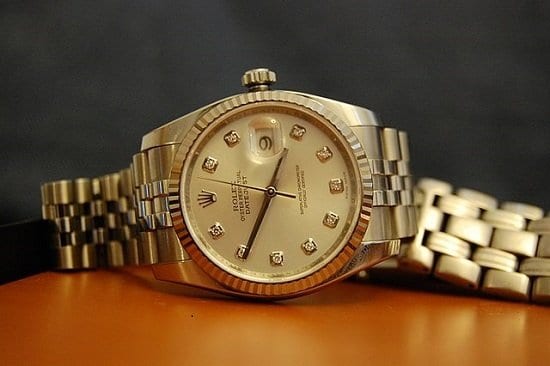
For some people, gold is a sign of power and status. Wealthy individuals have always been keen to show off their wealth in the form of gold, whether it’s by wearing a luxury wristwatch or a piece of fancy jewellery. Today gold is used to decorate iPhones, cars and was even used to create an exclusive credit card created by a bank in Kazakhstan. The card was made using gold, diamonds and mother of pearl.
Gold’s high esteem is also reflected in sport. Gold medals and trophies are synonymous with winners. King’s and queens still adorn crowns made of gold, rather than stronger metals, simply because of their global status.
More and more uses for gold are being discovered all the time. Our growing dependence on electronics and computers also means that gold usage is likely to grow sooner rather than later.
Harnessing the power of gold nanoparticles is also creating an ever-growing list of applications for gold. Nanoparticles are already being used in botanical research, cancer, toxin and pathogen detection and optical-electronics for sensory exploratory probes.
Physical Gold is one of the leading providers of gold and silver in the UK. Our professional team of experts help guide investors who are interested in tax-efficient solutions, to help diversify their investment portfolio.
For more information, please give us a call on 020 7060 9992.
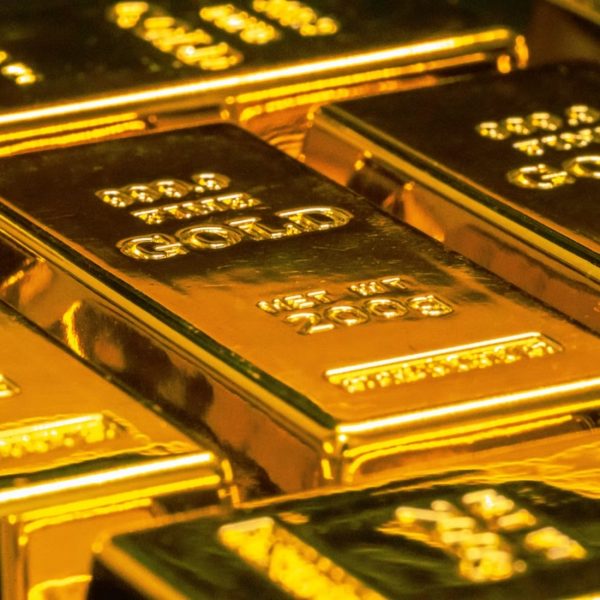
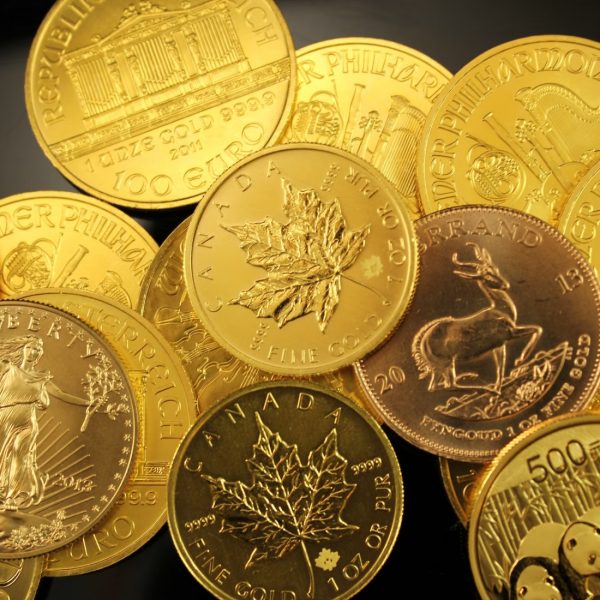
Gold is utilized in various industries, including electronics, dentistry, and aerospace, due to its excellent conductivity, corrosion resistance, and malleability. Additionally, it is highly valued in jewellery and as a store of wealth.
Gold’s exceptional conductivity makes it a preferred material for manufacturing electronic components. It ensures reliable connections and helps prevent corrosion, ensuring the longevity and efficiency of electronic devices.
Gold is employed in dentistry for its biocompatibility and durability. It is often used in crowns, bridges, and other dental restorations. Its inert nature minimizes the risk of allergic reactions, making it a reliable choice in dental applications.
Gold’s resistance to corrosion and ability to reflect infrared radiation make it crucial in aerospace technology. It is used in satellite components, spacecraft coatings, and astronaut helmets, providing both functionality and protection.
Gold is a popular choice for jewellery due to its beauty, rarity, and resistance to tarnish. It is often alloyed with other metals to enhance its durability and create different colours. Gold’s enduring value has made it a symbol of wealth and prestige in many cultures.
Live Gold Spot Price in Sterling. Gold is one of the densest of all metals. It is a good conductor of heat and electricity. It is also soft and the most malleable and ductile of the elements; an ounce (31.1 grams; gold is weighed in troy ounces) can be beaten out to 187 square feet (about 17 square metres) in extremely thin sheets called gold leaf.
Live Silver Spot Price in Sterling. Silver (Ag), chemical element, a white lustrous metal valued for its decorative beauty and electrical conductivity. Silver is located in Group 11 (Ib) and Period 5 of the periodic table, between copper (Period 4) and gold (Period 6), and its physical and chemical properties are intermediate between those two metals.